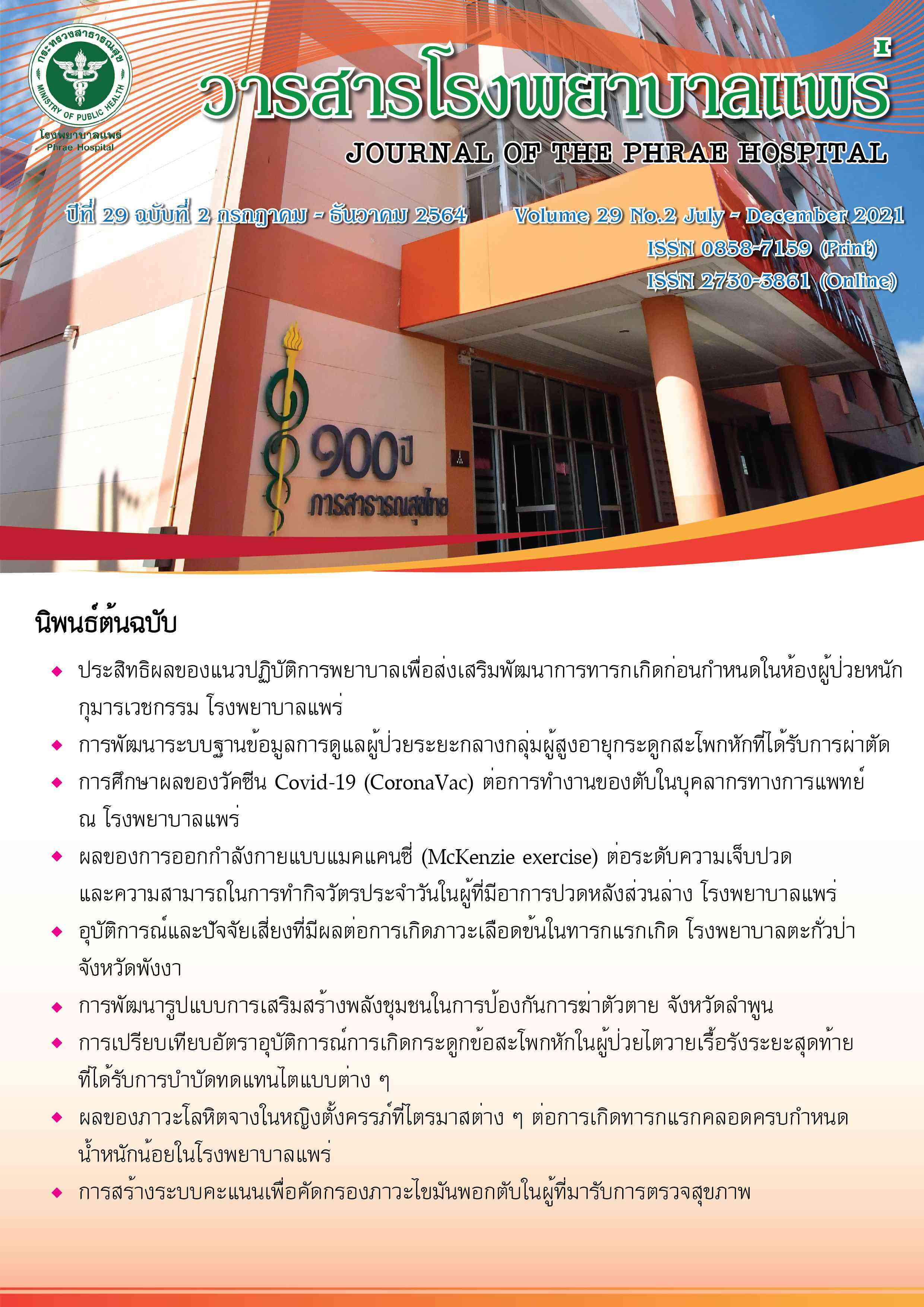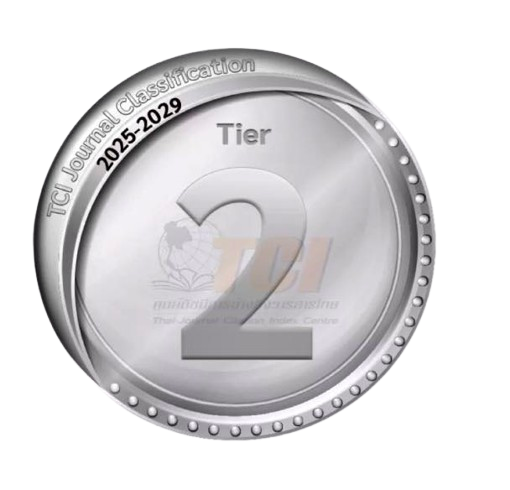Development of a screening model for fatty liver in annual check-up individuals
Abstract
Background: Fatty liver has a possibility to develop into hepatitis, cirrhosis, and liver cancer. In clinical practice, abdominal ultrasonography, a standard reference procedure, is frequently employed to diagnose the condition. Nevertheless, this method depends on an appointment system that puts those who need it on long waiting lists. A simple screening tool is needed to detect fatty liver before further abdominal ultrasound investigation.
Objective: To develop a clinical prediction rule from clinical profiles for screening fatty liver in an individual who attends a check-up clinic at Phrae hospital.
Study design: Prediction research with retrospective case-control analogue for data collection in individuals who attended check-up clinic between January 1st, 2019 to October 31st, 2020 of 538 individuals undergone abdominal ultrasound by radiologists, 176 had fatty liver and 362 were confirmed negative. The relationship of clinical profiles with fatty liver. The discriminative ability of the parsimonious prediction model was represented. The risk score was developed. Reported for each level of risk scores.
Results: Clinical profiles that are strongly related to fatty liver are being male, exceeding waist circumference, having a high level of TG and ALT. The final prediction model that consists of these predictors has an AuROC of 0.764. The total score ranges 0-14 marks, where 0-4 refers to a low risk group, 4.5-8 a moderate risk and 8.5-14 a high risk. Each group has the DOR of 0.19 (95%CI: 0.13-0.29), 1.56 (95%CI: 1.08-2.25), and 11.0 (95%CI: 5.90-20.51) and the likelihood ratio positive equals 0.38 (95%CI: 0.29-0.51), 1.30 (95%CI: 1.05-1.61), and 7.93 (95%CI: 4.53-13.88) respectively.
Conclusion: The Risk score derived from our study is quite good to distinguish individuals with fatty liver from those without, especially for exceptionally low and high scores. Abdominal ultrasound investigation is suggestive for individuals with high scores. An added-value prediction research including others potential predictors is required for future research.
Keywords: Fatty liver, Clinical prediction rules




